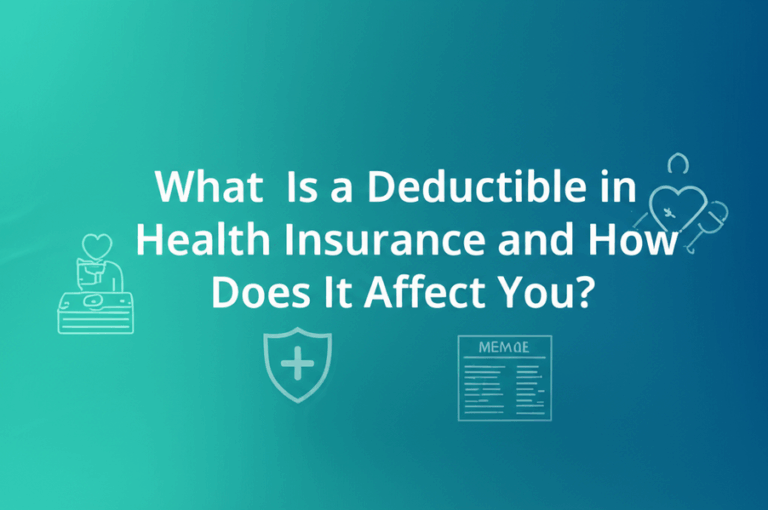What is Short Term Health Insurance and How Does It Work?

Many people wonder, what is short term health insurance? When you lose regular coverage or need a quick option, it helps bridge the gap. Our team works with folks searching for flexible, affordable health plans. We guide you through real choices and the facts that matter most.
You will learn how short term health insurance works in the USA. You will see what these plans cover, what you pay, and what risks or benefits you may face. Stay curious as we share expert advice so you can make a smart, confident decision.
What should you know before choosing short term health insurance
Short term health insurance fills important gaps when you lose work coverage, travel, or miss the yearly open enrollment. Our clients use these plans for transitions, like changing jobs or waiting for new benefits. Short term policies focus on fast approval so you do not wait weeks for coverage. These plans support real people with urgent needs, offering essential protection against big surprises.
Many people ask, is a short term plan worth it? I always look at their medical needs and coverage gaps first. People use these plans for short times, not as year-round protection. If you need help with long-term conditions or prescriptions, a yearly plan works better. Still, when clients need emergency coverage or a bridge, these plans bring peace of mind and real flexibility.
Understanding how short term plans fill coverage gaps
Short term health insurance acts as a stopgap. When someone loses job-based health insurance or misses open enrollment, they might worry about going without any protection. A short term plan provides coverage for things like hospital visits, emergency care, and doctor’s checkups during this gap. You should always know, short term medical insurance does not offer every benefit.
I once helped a student who graduated and lost her campus coverage in June. She used short term insurance until her new job started in September. This option avoided large medical bills from sudden illness or accidents. Many use short term health insurance as bridge coverage when moving between states or waiting for benefits from a new employer.
Short term plans usually start right away, sometimes on the next day after application. This speed makes a difference during urgent life changes. However, you must check the policy for exclusions—many plans do not include preventative services, maternity, or mental health. Double-check what types of services matter most to you now.
Comparing short term benefits with yearly health plans
Short term insurance covers only core medical needs. Annual plans, like those in the ACA marketplace, require insurance companies to pay for things like routine checkups, maternity, and prescription drugs. Short term plans often exclude some of these. You need to understand what these policies can and cannot do before you choose.
The chart below compares key features:
| Short Term Health Insurance | Traditional ACA Plan |
|---|---|
| Fast approval, next-day start | Open enrollment needed |
| Coverage for accidents, big illnesses, ER | Must cover essential health needs |
| No maternity, mental health, or preventive | Full benefits by law |
| Lower monthly cost, higher risk of gaps | Standard costs, fewer exclusions |

What coverage and limits do these health plans offer
Short term health policies help people pay for sudden medical needs. Their limits and exclusions differ from regular plans. The plan decides which benefits stay in and which go out. I always tell clients to read every policy detail, so nothing surprises them in a claim.
Policies usually cover hospital rooms, emergency rooms, some surgeries, some follow-up doctor visits, and certain lab tests. They rarely cover preventive checkups, pregnancy, or treating pre-existing problems. Clients should also look at the maximum payout covered. Many short term plans cap payouts at lower amounts than regular health insurance. I review examples with our clients to show how much they might get for common conditions.
Finding out what is included and excluded in coverage
Each company for short term health insurance writes different rules. Most plans will pay when someone needs hospital care for illnesses that start after the policy date. They often help pay for ambulance rides, some testing, and surgeries. If you break an arm or get appendicitis, most plans pay a portion of those costs.
On the other side, some items stay excluded. These can include vision, dental, maternity care, mental health counseling, or ongoing prescriptions for chronic conditions. You need to check each exclusion up front. I had a client who assumed prescriptions always get covered. He paid out of his own pocket because he had not seen his drug excluded.
Some states have special laws about what short term insurance must cover. In California, for example, short term medical insurance does not meet ongoing health care needs and only stays for a set time. Short term health insurance definition always revolves around these specific exclusions. You need to focus on what matters for your current health.
Exploring limits and common restrictions you may face
Short term health insurance often uses strict yearly or policy term limits. If someone needs a lot of care, the plan only pays to a capped amount. You see limits like $250,000 for the full policy. Some cap coverage per person per illness. Our clients should compare these numbers side by side before picking a policy.
Deductibles and copays run a bit higher than most full-year options. Most plans do not renew. When a term ends, you need a new application. I helped one family with a short term plan, and after their term ended, they had to pass health questions again to get a new policy. If their health had changed, the new insurer could refuse coverage.
Some companies require a waiting period before claims start. Others restrict coverage for people with serious medical histories. Always double-check: will you need health insurance for gap coverage, or could you face a gap with exclusions?

What costs will you pay for short term health insurance
Costs for short term health insurance can look lower than regular major medical plans. Most buyers focus first on the monthly premium. The average cost in the USA runs from $50 to $200 a month for single coverage. Family plans cost more because coverage extends to dependents. Plans with higher deductibles often have the lowest monthly price.
Premiums only show part of the cost story. You must consider deductibles, copays, what you pay out of your own pocket, and maximum limits on the plan. If you need health care often or risk high bills, short term insurance might surprise you with larger out-of-pocket costs.
Examining how much monthly premiums typically are
Short term insurance cost USA varies by your age, state, policy term, and coverage needs. Premiums look much lower than full ACA options because fewer risks shift to the insurer. Individual plans may cost around $100 per month. When clients add more benefits or reduce deductibles, they see higher premiums.
Table: Example of short term premiums by age and state (2024 data):
| Age | Texas (per month) | California (per month) |
|---|---|---|
| 24 | $80 | $90 |
| 40 | $110 | $120 |
| 60 | $160 | $170 |
If you keep short term medical insurance for just one month, your total cost may look low, but it brings risks. If you use it for several months or have a major health problem, costs can add up quickly. Each insurer sets its own quote system, so our team always compares at least three offers for each client.
Discussing out-of-pocket costs, deductibles, and copays
Out-of-pocket costs include everything you pay when you see the doctor, go to the ER, or need treatment. A deductible is what you must pay before the insurer pays anything. These deductibles for short term insurance usually start at $1,000 and can go as high as $10,000 or more.
Copays stay common, too. For example, you could pay $50 to visit a doctor, or $200 for emergency care. Once you spend your deductible, the insurer usually pays a percentage of further costs, up to the policy limits. If your plan has a lot of exclusions, you pay those costs as well.
The best way to lower these costs is to know your expected medical needs. If you think you will need specific care, look up what those expenses cost outside the insurance network. Many people use short term health plans for year gaps between jobs or school. For continued care (like treatments for ongoing issues), look at ACA options. Internal link: see our guide on choosing the right ACA plan for your needs.

What are real advantages and downsides of short term health insurance
Short term health insurance offers fast, affordable coverage, but it does not fit every need. I have watched families win peace of mind with these plans during job changes. I have also seen some regret not picking a full-year plan.
The biggest advantage is flexibility; you can apply any time, and coverage starts fast. It costs less monthly compared to ACA plans. For people who only need coverage for a few months, it saves money.
However, short term insurance comes with risks: It often excludes pre-existing conditions and many routine or preventative services. Some states limit policy terms or do not allow these plans at all. Internal link: learn about state-by-state short term insurance rules.
Listing reasons people choose these plans
Most clients ask about short term insurance when they face a sudden loss of coverage. College graduates, people switching jobs, or those waiting for new benefits rely on it. Others take these policies because they missed open enrollment or need travel insurance while moving across the country.
Some quick reasons people like these plans:
- Immediate approval, often within one day
- Cheaper monthly premiums
- Short application with few medical questions
- Useful for healthy people who want emergency protection only
One real example: I helped a freelance photographer who lived between states. She often worked in cities where her yearly plan did not reach. She used temporary health insurance USA providers to protect herself during high-travel months. The process to sign up took only twenty minutes, and she could cancel when her yearly coverage started again.
Addressing potential risks and who may not benefit
People with ongoing medical needs or expecting a baby should consider ACA or employer health plans. Short term insurance usually does not pay for ongoing medicine, specialist visits, maternity, or chronic care. If coverage gaps last more than a few months, risks grow. Plans cap what they pay. Insurers can deny new coverage if your health changes.
Claims studies show: In 2023, about 60% of denied claims on short term policies involved exclusions for pre-existing conditions or uncovered services. I always advise our clients to check limits and disclosure forms closely. For some, a short term policy works as a last resort. For others, who expect many doctor visits or need steady care, it may cost more in the end.
If you need ongoing health support, review all options. Our team compares short term, ACA, and other special programs to match each person’s needs.

Short term health insurance answers real needs for those facing gaps or changes. Our advice comes from helping people compare policies and avoid costly surprises. When you choose if short term health insurance fits, always weigh what is covered, the costs, and the risks. We recommend that you use our expert guides on ACA vs short term benefits comparison to make a smart, confident choice.
Related: What Is Self-Insured Health Insurance and How Does It Work?






